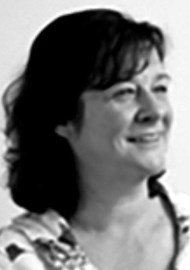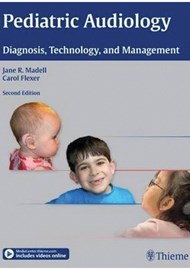In the current NHS climate of pressure on patient throughput, offset against new technology – and plasticity - driven practice, we need to use time and skills effectively. This book is a comprehensive guide to practical applications in paediatric audiology. The style is concise and confident, with content derived from the combined experience and knowledge of acknowledged experts in the field.
Chapters cover fundamental tenets of paediatric audiology from the standpoint of clinical necessity, based on current understanding of best practice. Each chapter is punctuated with ‘key points’, ‘pearls’ of information and ‘pitfalls’ to help avoid recognised barriers in effective hearing management. At the end of each chapter there are ‘discussion questions’ to help readers consolidate the key points into considerations around their own case load.
Specific chapters on behavioural techniques for hearing assessment are supported by nearly two hours of online videos, showing examples of real world clinical practice. These give audiologists the rare opportunity to apply peer-review procedures. When watching testing, the tendency is to see only the differences with one’s own practice. By watching again, preferably with colleagues, one can actively observe how practice can be enhanced, rather than solely looking for confirmation that current test practice is adequate.
The videos for behaviour observation audiometry (BOA) are also made available without a soundtrack, to build subjective observation skills, which become the difference between having clinical competence for applying a procedure or for evolving clinical acumen.
The videos on speech testing include detection of the Ling Sounds, demonstrating word recognition using body parts and a Mr Potato Head figure, picture pointing in closed-set tasks, open-set word recognition and the computerised CRISP test in competing speech, making the requirement for functional speech results at every appointment seem distinctly feasible.
The sections in this book covering fundamental components of fitting hearing technology, include chapters on the acoustic speech signal by Arthur Boothroyd, hearing aids, by the NAL group, room acoustics and remote microphone use. The educational management section includes counselling parents of children with hearing loss, and for children and teens, by Kris English. There are new chapters on vestibular assessment, BAHA and that underutilised resource, the role of the audiology assistant.
All of the chapters are succinct in the presented content, but references for foundation sources are given for the motivated reader. The aim is to help build confidence for the clinician starting out, and for those with long-term clinical experience, to understand, explore and apply new practice.
The cost of the book is around £60, but is approximately equivalent to the cost of a single NHS paediatric appointment. Considering the potential for increased efficiency in practice and outcomes, this seems a reasonable compromise.





